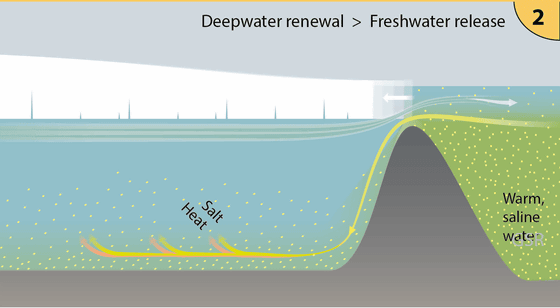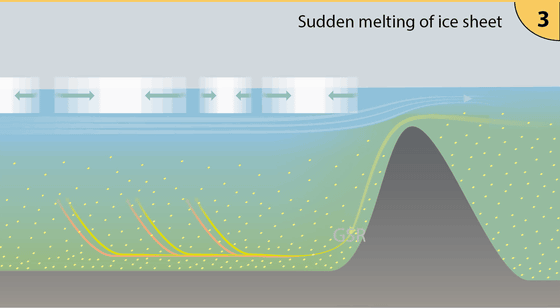There have been at least two times when the Arctic Ocean was filled with fresh water

A long-term study by the
Glacial episodes of a freshwater Arctic Ocean covered by a thick ice shelf | Nature
https://doi.org/10.1038/s41586-021-03186-y

AWI --The Arctic Ocean was covered by a shelf ice and filled with freshwater
During the coldest of the last glacial periods, which lasted from about 70,000 to 10,000 years ago, there were huge ice sheets in large areas of Northern Europe and in North America. The gray part of the map below shows the ice sheet. This is known from glacial landforms .

On the other hand, how the Arctic Ocean was like was not well understood with few traces.
Researchers at AWI and MARUM collected sediment cores at 10 locations in the Arctic Ocean, including the
The results show that the Arctic Ocean has been covered by floating ice sheets for the past 150,000 years. In addition, there are times when the ice sheet is completely covered, once 150,000 to 130,000 years ago and once 70,000 to 60,000 years ago, and at this time fresh water accumulates and the Arctic Ocean is completely covered. Was a freshwater sea. The amount of freshwater supplied to the Arctic Ocean is believed to have reached at least 1200 km³ annually.
A diagram showing the desalinating Arctic Ocean. Freshwater is supplied while the sea surface is covered with ice sheets, and salty seawater is steadily flowing out to the North Pacific Ocean and other areas. However, because the salt is heavy, not all of it is discharged and remains towards the bottom.

As the ice sheet recedes, freshwater begins to emerge over the heavy seawater that flows into the Arctic Ocean. Also, because the water in the North Atlantic is warm, the ice will melt further.

And it is thought that there was a trend that the ice sheet cracked and became smaller.

The fact that such a mechanism caused a large amount of freshwater to flow into the North Atlantic in a short period of time may be the reason for the contradiction that was created between the deposition rate and the dating results in past studies. Further research is expected.
Related Posts:
in Science, Posted by logc_nt







